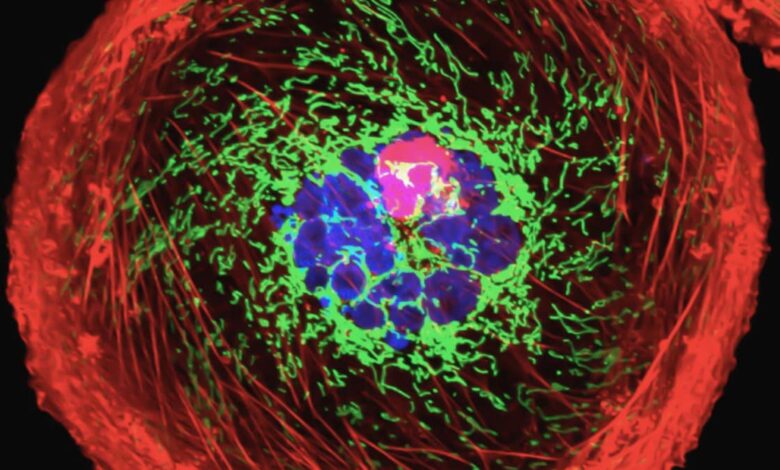Cells split mitochondrial roles when nutrients are low, new study finds

Researchers have discovered a ‘division of labor’ among mitochondria, in which subpopulations within cells specialize in different roles when nutrients are scarce. Under the leadership of Dr. Craig Thompson, a cell biologist at Memorial Sloan Kettering Cancer Center, the team observed that certain mitochondria in nutrient-poor cells focus on producing energy, while others shift to synthesizing molecules needed for cellular repair and protein production. This newfound specialization could play an important role in how cells respond to injury and adapt to low-nutrient conditions.
Mitochondria: beyond energy production
The research was published in Nature. Mitochondria are traditionally known for the production of adenosine triphosphate (ATP), the molecule that powers most cellular processes. However, they are also involved in the production of amino acids, essential for the construction of proteins and other vital molecules. In resource-constrained environments, such as when blood flow is reduced due to injury, mitochondria may face limitations in simultaneously supporting energy production and molecular synthesis. The research team of Dr. Thompson sought to understand how cells might prioritize these functions under such conditions.
Mitochondrial adaptation in mouse cells
The researchers grew mouse cells under conditions that forced them to rely solely on mitochondrial ATP production, limiting alternative energy sources. Unexpectedly, the mitochondria continued to produce amino acids, indicating a specialized adaptation mechanism. A key enzyme called P5CS was found to play an important role in this process. Found only in certain mitochondria did P5CS enable amino acid synthesis by clustering in specific organelles. Genetic modification that prevented this clustering blocked amino acid production, revealing the essential role of P5CS in the division of labor.
Implications for cancer research and cure
The study’s findings may provide insight into how nutrient-poor cancer cells maintain growth, as some human pancreatic cancer cells also showed specialized mitochondria with P5CS clusters. Dr. Samantha Lewis, a mitochondrial biologist at the University of California, Berkeley, commented on the study, noting that it provides a model for examining mitochondrial diversity. Dr. Martin Picard, a mitochondrial psychobiologist at Columbia University, emphasized the need for further research to assess the importance of this specialization in living organisms, as this study was conducted in cultured cells.
For the latest tech news and reviews, follow Gadgets 360 X, Facebook, WhatsApp, Wires And Google News. For the latest videos on gadgets and technology, subscribe to our YouTube channel. If you want to know everything about top influencers, follow our in-house Who is that360 on Instagram And YouTube.

Sewer surveillance could be a powerful tool to combat antimicrobial resistance, new research shows
TSMC to suspend production of advanced AI chips for China from November 11: report





